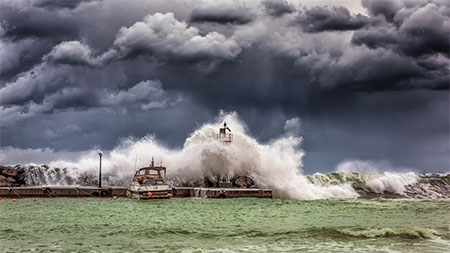By Michael Boardman, CEO/Founder, Readiness Associates
Natural and man-made disasters can have catastrophic, long-term impacts. Look no further than the devastation visited by Hurricane Irma upon Puerto Rico, where some residents have struggled for months without power or sufficient water supplies.
Healthcare organizations face unique challenges in providing continuing patient care during crises. Realizing this, late last year the U.S. Centers for Medicare & Medicaid Services (CMS) of the U.S. Department of Health and Human Services made it mandatory for 17 types of healthcare organizations to implement Emergency Preparedness Programs for their facilities.
To comply with the new CMS Emergency Preparedness Final Rule, organizations must perform a risk assessment, develop emergency plans, communications plans, policies and procedures, and train and test staff members.
Consequences of noncompliance
Organizations must comply with the new rule. Facilities failing to do so could suffer the possible loss of Medicare and Medicaid reimbursements, suspension of services to some patients, and financial penalties. Any of these could produce burdens that might potentially threaten the very existence of some organizations.
Make no mistake, the specter of noncompliance and the resulting penalties are real. Already, it’s been reported that long-term care facilities in at least one state are struggling to meet Conditions of Participation; facilities in other states could also be vulnerable.
Senate Finance Committee takes notice
The Senate Finance Committee expressed its concern about the situation in a letter to Seema Verma, CMS administrator, dated Oct. 18, 2017, and signed by committee chairman Sen. Orrin Hatch and ranking member Sen. Ron Wyden. They asked for information about CMS requirements for emergency preparedness and response “for nursing homes and other similar facilities.”
As stated in the letter: “In 2005, the deaths of nursing home residents during Hurricane Katrina highlighted the necessity for adequate emergency preparedness and response at the Federal, State, and local levels.”
The letter further noted that in a 2012 follow-up report, the Office of the Inspector General of the Department of Health and Human Services “examined the responses of nursing homes to recent wildfires in the West, floods in the Midwest, and hurricanes on the Gulf Coast and East Coast and found that gaps in nursing home emergency preparedness and response continued to exist.”
The letter went on to detail disasters that had affected facilities since the Emergency Preparedness rule was finalized in November 2016.
Seeking help to ensure compliance
Clearly, organizations with limited resources will struggle to meet these expectations. They may be wise to enlist the support of outside professionals who can approach crisis situations with the necessary expertise.

